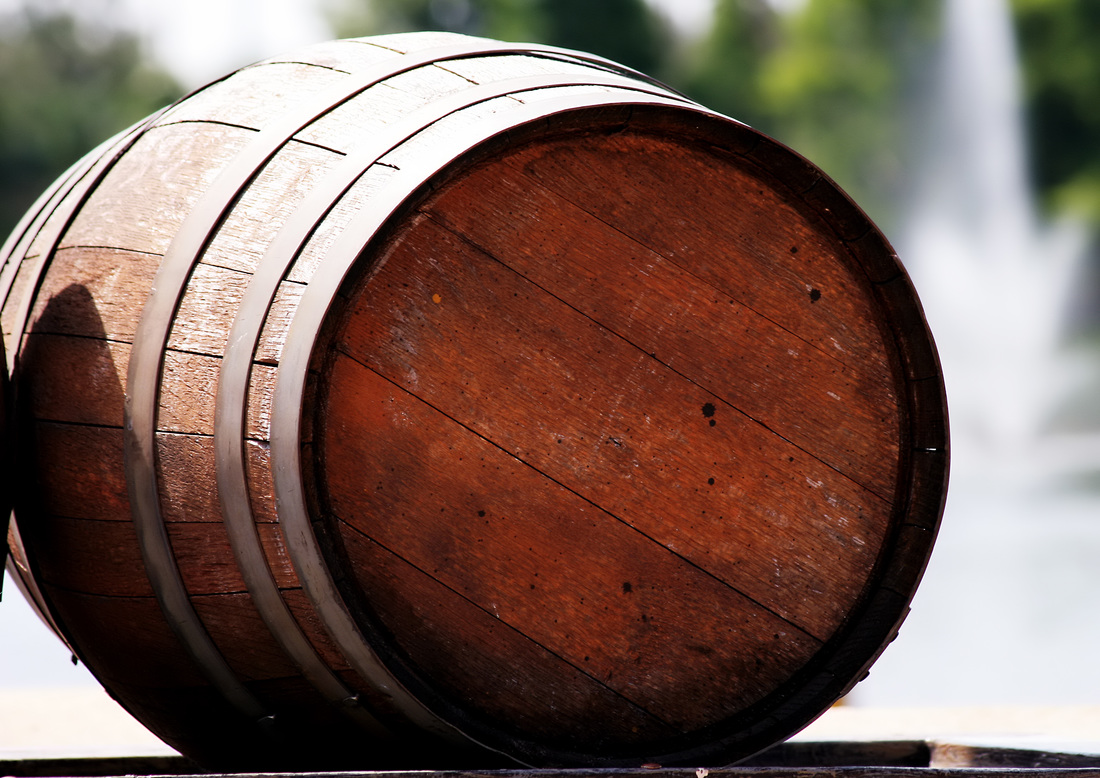 The When? The ‘when’ in this blog series refers to whiskey, its ‘Statements of Age’ and how it’s reflected on the label. In the United States, a specific statement of age is REQUIRED on the label if the whiskey is less than four years old. This applies also to blends, if the youngest whiskey in the blend is under four years old, there must be an age statement on the label. Age refers to the period of time that distilled spirits have been stored in oak containers. This period of time is after distillation and before bottling. For distilled spirits* the statement of age (whether required or optional) must appear as: “AGED ____ YEARS” or “____ YEARS OLD” (the blank is filled in either with the specific aged year or the age of the youngest distilled spirit in a blend) For US whiskies* stored in re-used oak, the statement of age (whether required or optional) must appear as: “_____ STORED _____ YEARS IN REUSED COOPERAGE” (the first blank is the type/class of spirit, the second blank is the number of years it was stored) Or if it is a mixture or blend, it is stated this way: “_____% _________ STORED ______YEARS IN REUSED COOPERAGE” (the first blank is the % of the finished product contributed by each listed spirit (total must = 100%) the second blank is the class/type and the third blank is the number of years stored in reused oak) EXAMPLE: Two whiskies distilled from bourbon mash are blended. Both whiskies are less than 4 years old. A statement of age is therefore required on the label. The bottler elects to disclose the age of each whiskey in the blend: “55% WHISKEY DISTILLED FROM BOURBON MASH STORED 3½ YEARS IN REUSED COOPERAGE 45% WHISKEY DISTILLED FROM BOURBON MASH STORED 2 YEARS IN REUSED COOPERAGE” For whiskey containing neutral spirits, a statement of age is required and must reference all whiskies contained in the product either: - Specifically by class/type, e.g., “straight bourbon whiskey,” “rye whiskey,” etc. or - Generally as “straight whiskey” or “whiskey,” as appropriate. For example, “straight bourbon whiskey” may be identified as “straight whiskey;” “rye whiskey” may be identified as “whiskey” If one straight whiskey and/or one other whiskey is contained in the product the statement would read: “_____% STRAIGHT** WHISKEY _____ YEARS OLD” or “_____% WHISKEY** ____YEARS OLD” (the first blank is the % of finished product contributed, the second blank is the specific age) If two or more straight whiskies or two or more other whiskies are contained in the product the label would read: “____% STRAIGHT WHISKEY**_____ YEARS OLD ____% STRAIGHT WHISKEY** _____ YEARS OLD” and/or “____% WHISKEY**_____ YEARS OLD ____% WHISKEY ** _____ YEARS OLD” OR “____% STRAIGHT WHISKIES _____ YEARS OR MORE OLD” and/or “____% WHISKIES _____ YEARS OR MORE OLD” (the first blank is the percentage of the finished product and the second blank is the age of the YOUNGEST whiskey and/or other whiskey in the blend) EXAMPLE: A blend of straight bourbon whiskey (5%), straight rye whiskey (8%), rye whiskey (10%) and wheat whiskey (12%) are used in the production of a distilled spirits product that also contains neutral spirits. All of the whiskies are less than 4 years old. The required age and percentage statement may appear as: “5% STRAIGHT BOURBON WHISKEY 2 YEARS OLD 8% STRAIGHT RYE WHISKEY 3 YEARS OLD 10% RYE WHISKEY 3½ YEARS OLD 12% WHEAT WHISKEY 3 YEARS OLD” OR “13% STRAIGHT WHISKIES 2 YEARS OR MORE OLD 22% WHISKIES 3 YEARS OR MORE OLD” ADDITIONAL NOTES: - Bourbon, rye, wheat, malt and rye whiskies must be aged in a new charred oak container. Straight corn whiskey is stored in a used or uncharred oak container). - The word ‘old’ or any other word implying age is NOT considered an age reference. - Age may be UNDERSTATED but NOT OVERSTATED. For example, a straight whiskey aged 59 months may not be overstated as “5 years old” but may be understated as “over 4 years old”. This blog wraps up my four series label deciphering blog. It’s all very complex. However, I believe having this knowledge, or at least retaining portions of it, makes the trip to the liquor store very interesting and somewhat entertaining. As to the question of ‘handmade’, I refer back to my first blog in this series and ask the question “What is the definition of hand-crafted?” This is a huge and much discussed question with a broad range of opinions! At Murray’s Fools Distilling Co. we believe it is up to the consumer to decide what they consider to be ‘hand-crafted’. We also believe that an informed CONSUMER will make a better, informed decision. This four part series is intended to piece together portions of information that will help you understand spirit bottle labels and make educated bottle selections that match your palate and perception of ‘hand-crafted’. * Other than US whiskey stored in re-used oak or whiskies containing neutral spirits. ** Specific type of whiskey or straight whiskey can be used. To see the first three blogs in this series follow the links below: Unlocking the Liquor Bottle Label Language | Part One of Four Unlocking the Liquor Bottle Label Language | Part Two of Four Unlocking the Liquor Bottle Label Language | Part Three of Four To view the TTB’s ‘The Beverage Alcohol Manual (BAM)’ CLICK HERE |
Sarah Beach
Co-founder of Murray's Fools Distilling Co. | Altona, NY Categories
All
Archives
September 2019
|


 RSS Feed
RSS Feed